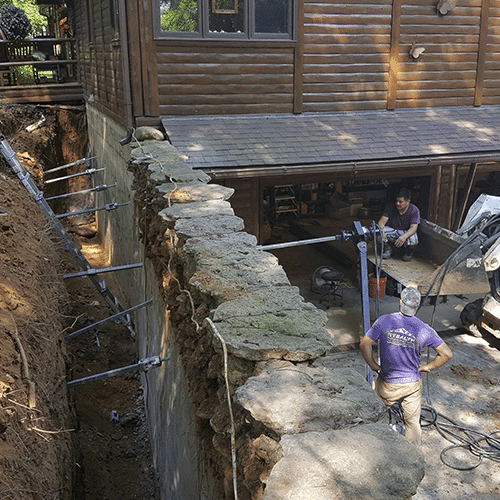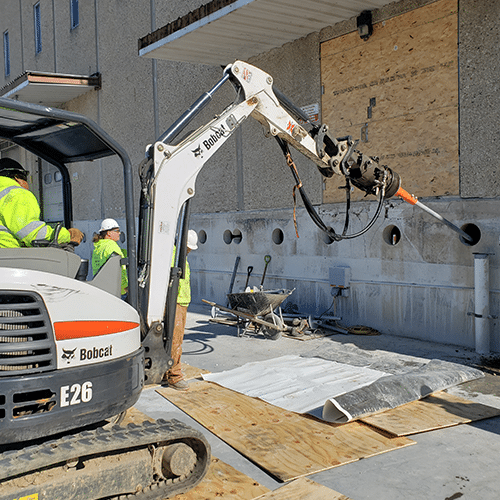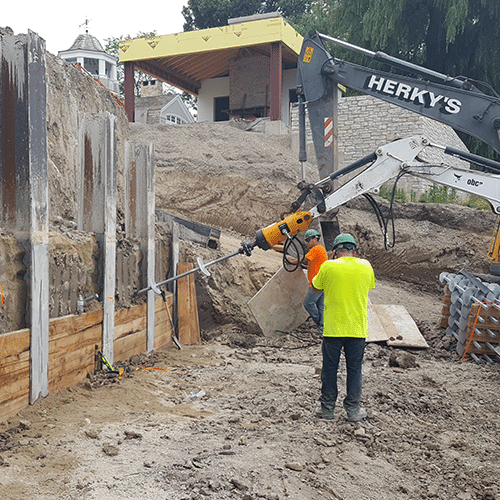Helical Tiebacks
Helical tiebacks or helical anchors are simply a screw anchor. Most tiebacks are square shaft with two or more helical flights welded to the shaft. The main function of a tieback anchor is to prevent horizontal movement of a structure by applying the tensile load to the soil.



How Helical Piers Are Installed
Helical anchors are screwed into the ground and their capacity is proportional to the torque required during installation. Use of the equation Qt=kT is helpful given that “Qt” is the tension load, “k” is the empirical constant, and “T” is the torque. By applying this equation and adding a factor of safety, the ultimate capacity of the tieback can be determined.
The lead section of a helical anchor and each extension bolted onto the lead section with helical flights, is the bonded length of the tieback. Each additional bolted on extension without a helical flight is the unbonded length. When installing tiebacks the failure plane/no load zone must be determined, and the bonded length of the tieback must be at least five times the largest helix diameter past the failure plane, into what is considered the load zone
Where Helical Tiebacks are Used
Tiebacks can be installed for both permanent and temporary structures subject to lateral loads from soil and water. Permanent applications are for basement foundation walls or retaining wall repairs. Temporary applications could be for soldier piles, secant pile walls, timber and lag or sheet piling. These are the most common.
A typical helical tieback will be a lead section, extensions, and adapter to receive the threaded bar with some type of termination adapter. This is typically a plate welded to whalers or directly bolted to a foundation wall secured with a nut.

